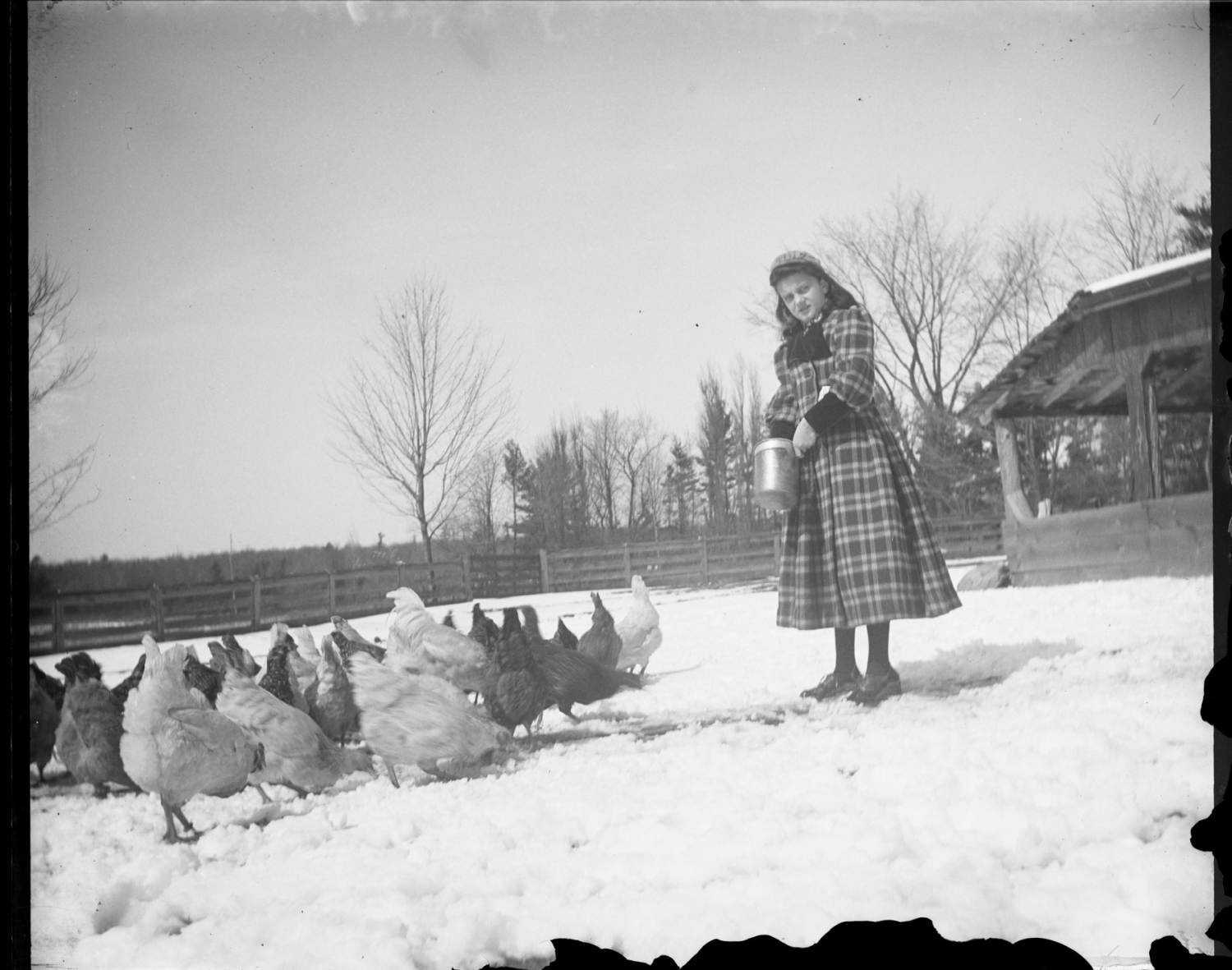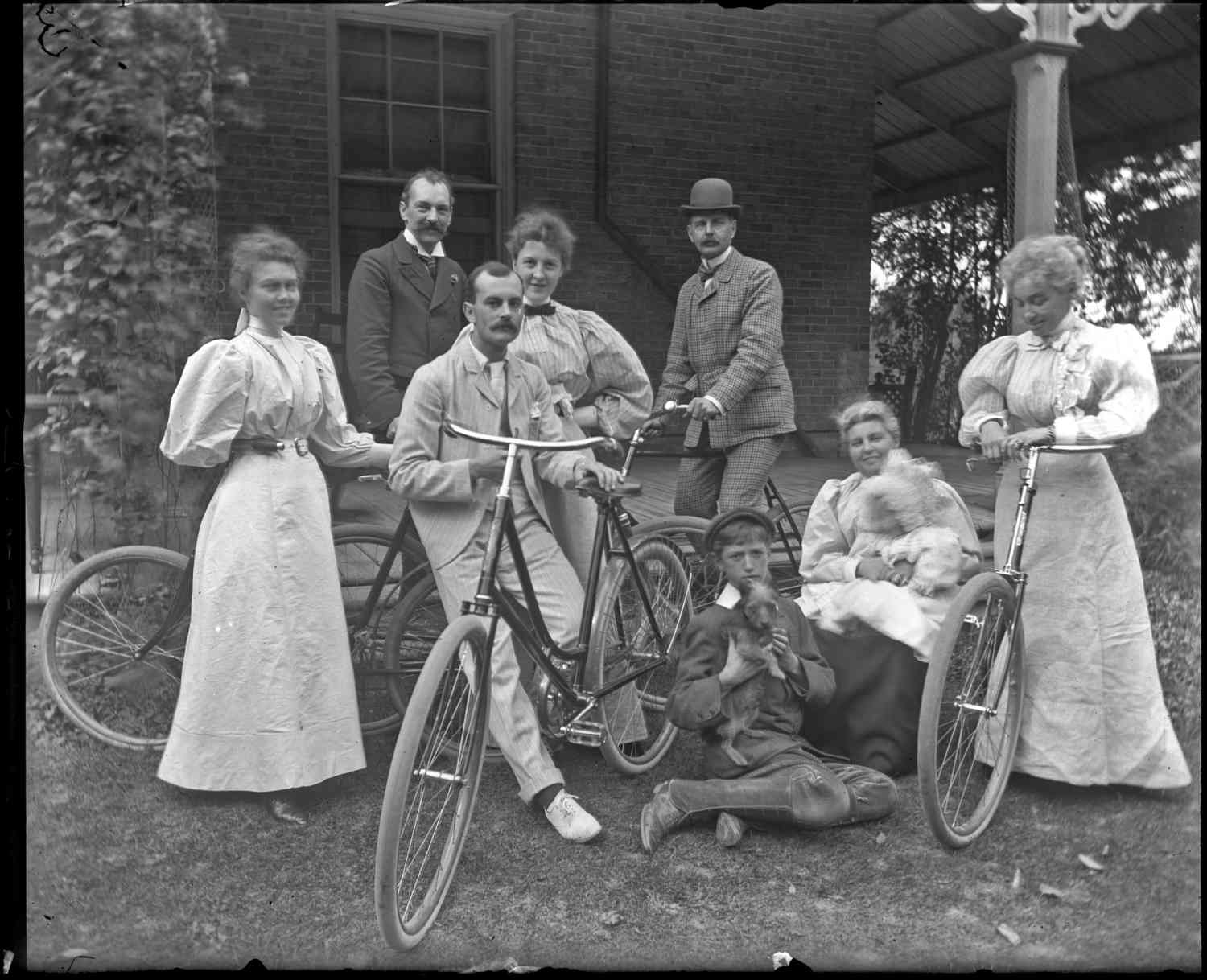Patteson Family Photographs
Patteson Family Photographs
Happy family memories and a tragic "accidental" death; Archives Technician Megan delves into the hidden stories within the Patteson Family Photograph fonds.
By Megan Lockhart, Archives Technician
When speaking with others about my job working in archives, a question I’m often asked is: “what’s your favourite record or collection?” This can be quite difficult to answer, picking one record as my favourite among the thousands of individual archival records I’ve handled or worked with during my career so far is like choosing between children. I appreciate specific records and collections for different reasons, and each record has its own significance or value. However; having said that, if I had to choose one type of record that I thoroughly enjoy working with, I would have to say photographs. If I narrowed this category down even further to choose my favourite photograph collection within the holdings at the Oxford County Archives, I may have to choose the Patteson family photographs fonds.
This archival collection contains around 40 glass plate negatives, and over 190 film negatives. The glass negatives contain images of the Patteson family of Eastwood, Ontario taken circa 1890 to 1894. The Patteson’s house and estate at Eastwood was located on the former Admiral Henry Vansittart property just east of Woodstock. The estate was owned by Thomas Charles Patteson (1836-1907), a lawyer, Ontario’s first Assistant Provincial Secretary, the Managing Editor and later proprietor of the Toronto newspaper the Mail, and the postmaster of Toronto in 1879. Thomas C. Patteson also owned racehorses and founded the Ontario Jockey Club. Patteson bred cattle and sheep on his farm in Eastwood, Ontario; and it appears that his family spent a few years living on the farm.
Thomas Patteson’s wife Marie Louise (née Jones), and their children Godfrey Barkworth (b. 27 October, 1867); Rose Louise (b. 18 October 1874); and Christine Millicent (Daisy) (b. circa 1877), are often the main subjects of the photographs, along with family friends, pets (such as their family dog “Muma”), and their horses. What I particularly enjoy about this specific photograph collection is the insight it provides into the family’s hobbies and interests. Rose Patteson left notes on the envelopes the negatives were stored in which sometimes described who was in the photo and who took it. A family friend, Dr. Pike, taught her how to use a camera, and she began to document her family’s activities through photography; many of the photos in the glass negative collection were taken by her. Photographs can be such important resources for social history research. The Patteson photos feature members of the family and friends taking part in recreational activities that were popular in the 1890s, including bicycle riding, golf, cricket, and canoeing. The photos also document their daily lives, Rose feeding the chickens, the family sitting and walking in the garden and the forest around their farm; Rose even took several photos of her father and Dr. Pike removing a large dead tree from their property at Christmas time.

Group portrait with cricket bats, at the Patteson estate in Eastwood, c. 1890s. 1076ph (COA126 1.07)

Rose Patteson feeding chickens on the Patteson farm/estate in Eastwood, 28 March 1891. 1080ph (COA126 1.11)

Group portrait of Patteson family and friends with bicycles at the Patteson home in Eastwood, 14 August 1892. 1089ph (COA126 1.20)
We tend to think of photos taken in this period being “stuffy” studio portraits, with subjects standing with rigid posture, an expressionless face looking directly at the camera or slightly off to the side. But this was a period where we see more examples of people experimenting with cameras and photography at home and outdoors. This has led to some more “candid” shots. One of my favourite photographs in this collection features one of the Patteson girls, potentially "Daisy", her brother Godfrey, and Muriel Burrowes crouching in front of a water trough for livestock, as if they were going to take a drink. The girls have mischievous smiles on their faces. This photograph collection also provides a wonderful visual sample of fashion trends for the period.

[Christine Millicent "Daisy" Patteson?], G.B.P. (Godfrey Barkworth Patteson), the Patteson's dog Muma and Muriel Burrowes, Eastwood, 8 July 1894. 1102ph (COA126 1.33)
The film negatives included within the Patteson family photograph fonds contain their own stories. These photographs mainly feature Rose’s sister Christine Millicent, better known as Daisy, her husband John H. Moss, and their son Thomas “Pat” Moss. The Moss family lived in Toronto at 105 Admiral Road during a time when many lives were affected by a global pandemic, Spanish Influenza, reminiscent of the time we are living in now. Daisy’s husband John sadly died from complications of the Spanish Flu in 1920. The negatives also contain photographs of Daisy and her young son, after her husband’s death, with family members and friends at their home in Toronto and on family vacations in places like Maine, USA, and Orillia and Muskoka, Ontario. The photographs provide a glimpse into their lives and how precious Pat was to his mother Daisy. Unfortunately, I discovered more tragedy related to this family’s story when researching their history further. Daisy’s son Pat died unexpectedly in 1936 at the age of 21 during his enrollment at Balliol College, a constituent of Oxford University in England. According to some sources it was an accident. However, sources at the Balliol College Archives state that despite being an unsolved case, his death was considered suspicious and there was a possibility he was murdered. His body was found in the early morning hours on May 15, 1936, in a burning hayrick (a stack of hay) at Ascot Park Farm near Stadhampton. An autopsy concluded that he died by asphyxiation due to the fire his body was found in. A wooden seat in the corner of the Fellows’ Garden in the Garden Quad at Balliol College is inscribed with his name.
Often, collections of photographs contain not only valuable images but hidden stories and fascinating narratives as well. Family photographs could be described as visual diaries, documenting the daily life of individuals throughout history and providing us with a glimpse into the intimate details of their lives if we examine them close enough. Having spent a significant amount of time digitizing this photograph collection and researching the family, I feel as though I have gotten to know them to some degree; but as always when conducting contextual research on a collection, there is a lot more to discover.
